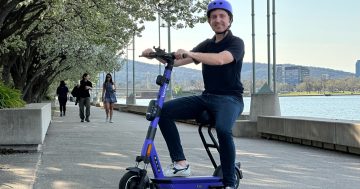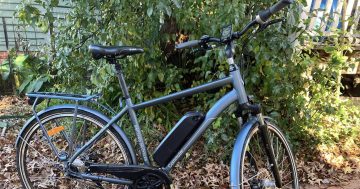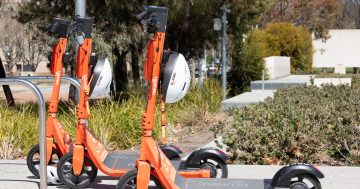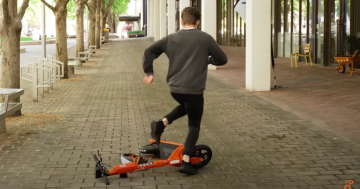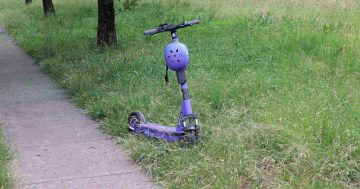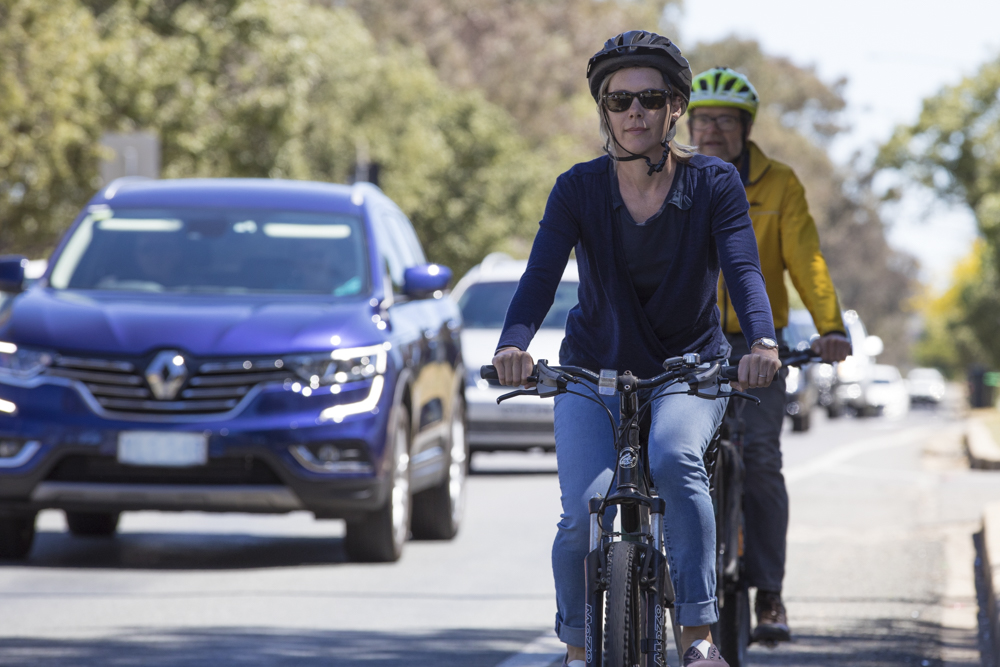
A new study estimated 28 per cent of Canberrans spent money on cycling in 2022. Photo: Michelle Kroll.
The ACT is embracing cycling and e-scooters more than any other state or territory, according to a new report by We Ride Australia.
The survey found 39 per cent of the adult population of the ACT cycled and 31 per cent used an e-scooter in 2022, the highest use per capita in the country.
The 2022 Australian Cycling and E-Scooter Economy Report, the largest national survey of cycling ever conducted, had a significantly broader scope than previous years.
We Ride Australia’s director of national advocacy Stephen Hodge said cycling participation had fallen since 2020, but this wasn’t surprising.
“Everybody was locked down and desperate to find ways to be active and get out,” he said.
However, national spending on cycling per capita is rising as e-bikes, typically more expensive, become more popular.
Mr Hodge said the ACT “really shines” as the place where, per capita, people were spending more on cycling and taking more trips by bike.
Bikes brought millions in to the ACT economy: overall, cycling contributed $213 million in direct output ($599 per capita) and $327 million in indirect output in 2022.
The direct contribution is defined as the economic activity directly generated by all elements of the industry, such as activity generated by participants, organisations, events, universities, national cycling teams and local and state governments, while the indirect contribution includes ‘flow on’ benefits to other industries.
The cycling industry also created 10,791 full-time equivalent direct jobs in the ACT.
The study estimated 28 per cent of Canberrans spent money on cycling in 2022. ‘Cycle tourism’ (overnight trips where cycling is the main purpose) contributed $88.1 million to the ACT economy, higher than that of metro Victoria, metro SA and metro Queensland.
Mr Hodge said the popularity of cycling in Canberra was likely due to cycling infrastructure.
“In the ACT, we have a fantastic network of continuous cycle paths,” he said.
“Compared to other cities, the participation and trip mode share has always been the highest in Australia.
Mr Hodge said one reason for this is that “we have a great network of off-road bicycle infrastructure”.
He said the study showed “clearly the biggest barrier” to increasing cycling uptake was the lack of cycling infrastructure. In the survey, about two-thirds of respondents nationally said they would cycle more if there was better infrastructure.
He noted the survey also showed people were still reluctant to use bikes even for short trips under 3 km or 5 km.
“These are simple and easy distances to do via scooters or bikes or walking, but people aren’t doing them. Why?
“They’re concerned about their lack of ability to get away from traffic.
“This comes out time and time again, people want to be able to stay away from busy traffic on the roads.”
The 2022 study is the first time e-scooters have been included in the research.
In the ACT, e-scooters contributed an estimated $12 million in direct output and $18 million in indirect output, as well as creating 54 direct jobs and 46 indirect jobs.
Canberra’s e-scooter scheme is the largest in Australia, with more than 3 million trips taken since Beam’s purple scooters and Neuron’s bright orange scooters first landed in the ACT in September 2020, according to the latest ride report data.
Since then, more have been rolled out across Gungahlin, Woden, Weston Creek, Tuggeranong and the Molonglo Valley. The ACT’s e-scooter operating area now covers more than 132 square kilometres.
Canberra’s fleet of 1900 e-scooters and 150 seated e-scooters has logged a total of 3.1 million journeys and covered 5.9 million kilometres since their introduction.
The daily average number of trips is 3000, at an average speed of 9.6 km/h. And the 14-day rolling average of journeys has never fallen below 2000.
Original Article published by Lizzie Waymouth on Riotact.




